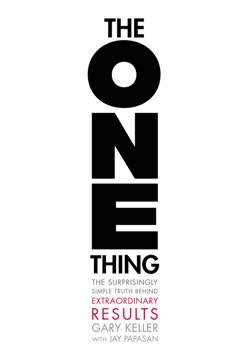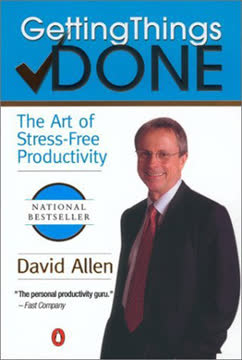重点摘要
1. 潜意识驱动我们的大部分行为
多达95%的消费者思维发生在他们的潜意识中。
隐藏的心灵主宰一切。 我们常常认为是意识在控制我们的行为,但实际上,意识更像是一个观察旅程的乘客。潜意识在我们未察觉的情况下,才是真正驱动我们行动和决策的力量。这个隐藏的力量每秒处理多达1100万比特的信息,而我们的意识只能处理40比特。
对营销人员的启示:
- 传统的市场研究依赖于自我报告,往往不准确
- 神经营销技术可以揭示更深层次的消费者洞察
- 有效的广告必须同时吸引意识和潜意识
冰山类比: 就像冰山一样,我们的心理过程只有一小部分是可见的,大部分隐藏在水面下,默默地影响我们的感知、判断和行为。
2. 我们首先是人类,其次才是消费者
如果你有兴趣操纵人心,请不要读这本书。
超越“消费者”标签。 营销人员常常犯的错误是仅仅将受众视为消费者,忽略了购买决策背后复杂的人类。这个狭隘的视角忽视了真正驱动行为的深层动机、本能和普遍需求。
转变视角:
- 关注人类洞察而非短暂的消费者趋势
- 理解超越文化和时间的持久人性真理
- 认识到人们的目标是满足自己的需求,而不是消费你的产品
通过采用这种以人为本的方式,营销人员可以建立更有意义的联系,开发出在更深层次上引起共鸣的产品和信息。这种视角也鼓励更道德的营销实践,旨在真正改善人们的生活,而不是操纵他们进行购买。
3. 我们的大脑为石器时代的生存而设计,而非现代消费主义
我们现代的头骨里装着石器时代的大脑。
进化不匹配。 尽管我们拥有先进的技术和看似现代的生活,我们的大脑仍然基本上受到祖先过去进化压力的形塑。超过99%的人类历史中,我们以狩猎采集者的身份生活,我们的认知结构反映了这一遗产。
现代世界中的石器时代本能:
- 渴望高热量食物(曾经稀缺,现在丰富)
- 寻求社会地位和接受
- 害怕被拒绝和外来威胁
- 被新奇的体验和信息所吸引
对营销的启示:
- 成功的品牌往往利用这些原始本能
- 理解进化心理学可以提供消费者行为的洞察
- 产品和信息可以设计来满足我们进化根源中的深层需求
这种我们古老大脑与现代环境的不匹配解释了许多看似不合理的消费者行为,并为营销人员提供了挑战和机遇。
4. 情感,而非逻辑,是决策的主要驱动力
我们不是思考的机器。我们是有感觉的机器,会思考。
情感的首要性。 与普遍的看法相反,我们的决策并不是主要由仔细的理性思考得出的。相反,情感在引导我们的选择中起着关键作用,往往在我们意识不到的情况下。
决策的神经科学:
- 情感大脑(边缘系统)处理信息的速度比理性大脑(新皮质)快
- 情感中心受损会严重影响决策能力
- 情感帮助我们为不同选项赋值并激励行动
对营销人员的启示:
- 关注与消费者建立情感联系
- 使用讲故事和感官体验来唤起期望的情感
- 认识到单纯的理性论据往往不足以改变行为
虽然逻辑论据和产品特性有其作用,但触及决策的情感驱动力往往是成功营销和品牌建设的关键。
5. 品牌通过触及深层人类需求和本能而成功
品牌是新的宗教。
超越功能和利益。 最强大的品牌不仅仅销售产品;它们触及基本的人类欲望,创造意义和归属感。
品牌可以满足的普遍人类需求:
- 社会联系和接受
- 地位和自尊
- 安全和舒适
- 个人成长和自我实现
- 兴奋和新奇
利用人类本能的品牌示例:
- 苹果:创造力、个性和地位
- 耐克:成就、自我提升和部落归属感
- 可口可乐:快乐、社会联系和怀旧
通过与这些深层需求对齐,品牌可以创造忠实的追随者,超越单纯的产品类别。这种方法解释了为什么一些品牌能激发客户几乎宗教般的忠诚。
6. 有效的营销同时吸引情感和理性思维
营销人员的业务是销售情感状态,而不是产品或服务。
平衡心与脑。 虽然情感是主要驱动力,理性思维在决策中仍然起着关键作用。有效的营销必须同时吸引这两个系统,以创造持久的影响并驱动行为改变。
双重过程说服模型:
- 情感吸引:创造欲望和积极联想
- 理性辩护:提供支持情感决策的逻辑理由
吸引两种思维的策略:
- 以情感故事为主导,随后提供事实支持
- 使用生动的图像和隐喻使理性论据更具吸引力
- 提供产品/服务的理想和实际利益
通过同时解决决策的情感和理性方面,营销人员可以创造更具说服力和记忆点的活动,在多个层面上与消费者产生共鸣。
7. 创造强大的体验是建立强大品牌联想的关键
品牌就像华丽的孔雀尾巴。
体验胜过信息。 在当今杂乱的媒体环境中,单纯传播品牌信息往往不足。创造沉浸式、多感官的体验可以形成更强大和持久的品牌联想。
强大品牌体验的要素:
- 调动多种感官(视觉、听觉、触觉、味觉、嗅觉)
- 唤起强烈的情感(快乐、兴奋、敬畏等)
- 鼓励积极参与和社会互动
- 创造难忘的“高峰”时刻和积极的结局
体验驱动品牌的示例:
- 红牛:赞助极限运动赛事
- 星巴克:创造家庭和工作之间的“第三空间”
- 迪士尼:沉浸式主题公园体验
这些体验超越传统广告,创造深厚的情感联系和与品牌相关的持久记忆。它们利用大脑通过多感官、情感充沛的事件形成更强神经连接的倾向。
8. 采取行动是改变行为和巩固品牌忠诚的关键
告诉我,我会忘记;展示给我,我可能会记住;让我参与,我就会理解。
行动驱动改变。 虽然意识和积极联想很重要,真正的行为改变和品牌忠诚通过反复的行动和产品或服务体验来巩固。
行动的心理学:
- 身体行动比被动观察调动更多的大脑
- 重复加强神经通路,使行为自动化
- 采取行动可以导致认知失调,促使态度改变以与行为一致
鼓励行动的策略:
- 提供免费试用和样品以降低初次使用的障碍
- 创建互动体验,允许与品牌的动手接触
- 开发奖励重复行动和购买的忠诚计划
- 使用社会证明和同伴影响来规范期望的行为
通过专注于让消费者采取行动,而不仅仅是吸收信息,营销人员可以创造更持久的行为改变和更强的品牌关系。这种以行动为导向的方法认识到人类是“行动者”,而不是信息的被动接受者。
最后更新日期:
FAQ
What's Unconscious Branding about?
- Unconscious decision-making: The book explores how most consumer decisions are made unconsciously, challenging the assumption that consumers are fully aware of their choices.
- Neuroscience integration: Douglas Van Praet combines insights from neuroscience with marketing strategies to enhance marketing effectiveness.
- Human behavior focus: It emphasizes viewing consumers as humans with emotions and instincts, rather than just statistics.
Why should I read Unconscious Branding?
- Revolutionary insights: Offers a fresh perspective on consumer behavior, highlighting the unconscious mind's role in decision-making.
- Practical strategies: Provides actionable strategies for marketers to connect with consumers on a deeper emotional level.
- Science and practice bridge: Integrates neuroscience with marketing, equipping readers to influence consumer behavior effectively.
What are the key takeaways of Unconscious Branding?
- Two minds concept: Introduces the idea that humans operate from two cognitive systems—the conscious and the unconscious.
- Seven steps to change: Outlines a seven-step process for changing consumer behavior, including interrupting patterns and creating comfort.
- Emotional connection: Stresses that successful marketing must engage consumers emotionally, as feelings drive decisions more than rational thought.
What are the best quotes from Unconscious Branding and what do they mean?
- Einstein's insight: “The rational mind is the humble servant, the intuitive mind the faithful gift.” Emphasizes the importance of intuition and emotion in decision-making.
- Jung's perspective: “Until you make the unconscious conscious, it will direct your life and you will call it fate.” Highlights the significance of understanding unconscious motivations.
- Damasio's message: “We are feeling machines that think.” Captures the book's core message that emotions play a fundamental role in decision-making.
How does Unconscious Branding define the unconscious mind's role in consumer behavior?
- Influence on decisions: The unconscious mind significantly influences consumer decisions, often without awareness.
- Emotional triggers: Emotional triggers processed unconsciously shape consumer preferences.
- Neural pathways: Repeated exposure to stimuli creates strong neural pathways, influencing brand perception.
What is the seven-step process for behavior change in Unconscious Branding?
- Interrupt the Pattern: Capture attention by doing something unexpected to break habitual thought processes.
- Create Comfort: Establish safety and familiarity to make consumers receptive to new ideas.
- Lead the Imagination: Encourage consumers to envision product benefits, stimulating desire for change.
How can marketers apply the concepts from Unconscious Branding?
- Emotional connections: Prioritize creating emotional bonds with consumers to drive loyalty and purchasing decisions.
- Pattern interrupts: Implement strategies that disrupt habitual thought patterns to capture attention.
- Neuroscience insights: Use neuroscience findings to ensure campaigns resonate on both conscious and unconscious levels.
What role does neuroscience play in Unconscious Branding?
- Understanding the brain: Explains how the brain processes information and makes decisions, emphasizing the unconscious mind.
- Behavioral insights: Provides insights from cognitive science and neurobiology to create effective strategies.
- Emotional engagement: Supports the idea that emotional engagement is crucial for influencing consumer behavior.
How does Unconscious Branding suggest marketers create comfort for consumers?
- Establish familiarity: Create a sense of familiarity and safety in messaging to ease consumer anxiety.
- Build trust: Foster trust through transparency and authenticity, making consumers comfortable with purchasing decisions.
- Reduce anxiety: Address potential concerns and provide reassurance to make consumers more receptive.
How can brands effectively change consumer associations according to Unconscious Branding?
- Reframing narratives: Change consumer associations by reframing brand narratives to align with desired perceptions.
- Celebrity endorsements: Use celebrity endorsements to influence perceptions and enhance brand image.
- Positive experiences: Create positive experiences that reinforce desired associations, reshaping consumer perceptions.
What are some practical applications of the concepts in Unconscious Branding?
- Marketing strategies: Apply the seven steps to develop comprehensive strategies that engage consumers on multiple levels.
- Customer experiences: Focus on creating memorable experiences that resonate emotionally, increasing loyalty.
- Neuroscience insights: Craft messages that resonate deeply by using emotional triggers and appealing to both rational and emotional aspects.
What is the significance of pattern interruption in marketing according to Unconscious Branding?
- Captures attention: Crucial for breaking through everyday marketing noise and grabbing attention.
- Stimulates curiosity: Piques curiosity by presenting something unexpected, encouraging engagement.
- Facilitates behavior change: Leads to new behaviors, making consumers more open to trying new products.
评论
《无意识品牌》获得了褒贬不一的评价,平均评分为3.92分(满分5分)。许多读者认为这本书内容深刻,提供了关于神经科学、消费者行为和营销策略的宝贵信息。该书因其发人深省的内容和现实世界的例子而受到赞赏。一些读者欣赏其在商业和个人生活中的适用性。然而,批评者认为其中的信息可能已经过时或具有操控性,有些人觉得技术语言难以理解。总体而言,这本书推荐给对营销、心理学和消费者行为感兴趣的人士。
Similar Books














